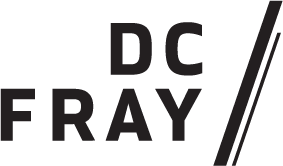New Documentary Explores DC’s Punk History
This article first appeared in the November issue of On Tap Magazine.
You always hear how difficult touring is for bands. I’m not talking about large-scale tour buses rivaling the comforts of first-class flights you read about in Rolling Stone profiles. I’m thinking of the little guy: the DIY band making their first sojourn through the Midwest or a five-piece indie outfit huddled together in a minivan with a shaky air conditioner on an adventure through the South.
Over the past two months, DC filmmaker James June Schneider experienced a similar cross-country trip while showcasing his documentary Punk the Capital: Building a Sound Movement.
“A film about DC punk done the way we do it really celebrates an American subculture that is a great chapter in American history,” Schneider says. “One that is still being discovered – an active history. This is a chance to celebrate a thread of American history.”
Following the film’s world premiere at the AFI Silver Theatre and Cultural Center this summer, the documentarian packed up his car with film in tow and drove across the country, hitting spots along the East Coast before venturing through the Midwest to California.
He wrapped up his road tour last month, looping through the Southwest on his way back to the District. In a sense, he mimicked his very subjects by touring art on a shoestring budget. Though he’s not in a band or a traveling musician, his mission to showcase the spirit of DC’s punk scene has taken him on somewhat of a journey.
“A film about DC punk done the way we do it really celebrates an American subculture that is a great chapter in American history,” Schneider says. “One that is still being discovered – an active history. This is a chance to celebrate a thread of American history.”
The film is set to return to the AFI in Silver Spring, Maryland for a three-night screening from November 9-11, including Q&A’s with Schneider, his co-directors Paul Bishow and Sam Lavine, and special guests like the Slickee Boys, Boyd Farrell, Anne Bonafede and others.
“I do think that people will be moved, whether they’re new to DC or grew up here,” he says. “They’ll get where it came from and hopefully be inspired by what’s happened. The great thing about DC punk is when you learn the ideas behind the scenes and the approaches to creativity, it can be applied not only to DC musicians but musicians anywhere.”
The film focuses on the early days of the capital’s punk scene, specifically from 1976 to 1983, and took more than a decade to produce. In the early development stages, the trio archived countless hours of interviews and gathered materials ranging from memorabilia to videos to photos. Combined with Bishow’s already extensive collection, the materials were so plentiful in volume that the team decided to narrow its focus to DC punk’s humble beginnings.
“It’s definitely an origin story,” he says. “As we were making the film, we discovered that there was a real need to investigate the earlier time period. It hadn’t been discussed in any great degree, the pre-hardcore scene. The history means a lot to a lot of people – not just in DC, but to people around the world.”
For a local like Schneider, the subject matter of the genre’s historic rise in the late 70s and early 80s hits extremely close to home. Ever since purchasing a Minor Threat album at 12 years old, the music has served as a soundtrack to his life, helping him remember a community that has remained important to him through adulthood.
“This is the music I grew up with. I had been in a bunch of bands and started making films in the 90s. When I discovered my friend Paul had all this great [footage] from the late 70s, it became evident that we should team up and do a film about it.”
Because of the uncharted territory and mostly forgotten material, Schneider says 95 percent of the people they approached about the film were enthusiastic about participation. Most interviews proved long and fruitful, which made editing the film down to its 88-minute runtime a difficult task. Like any labor of love, the filmmakers logged long hours piecing the documentary together, and watched various cuts several times before finally deeming it ready for public consumption.
“All three of us watched the film every few weeks, usually with other people in Paul’s apartment,” Schneider says. “Those were amazing screenings with hours-long discussions afterwards about the film and the community.”
Whether in their living rooms, at small-scale showings or at the bigger tentpole events like the three coming up at AFI, the resounding impact on viewers has been palpable.
“It’s definitely an origin story,” he says. “As we were making the film, we discovered that there was a real need to investigate the earlier time period. It hadn’t been discussed in any great degree, the pre-hardcore scene. The history means a lot to a lot of people – not just in DC, but to people around the world.”
“It is a music scene, so we have to say first and foremost that the music for the size of the scene is amazing,” Schneider continues. “What’s given it more longevity is the ideas behind it. The lyrics are fairly timeless. People weren’t just singing about [President] Reagan and current events. They were singing about their own trials and tribulations.”
The sentiment behind punk music will forever remain relevant to DC’s larger culture, as much as go-go and any other musical genre thrown into the mix. With the federal government sitting on most corners of the city, there will always be a need to protest – and no music has a reputation for antagonizing Big Brother quite like DC punk.
“It’s definitely continuing to this day,” Schneider adds. “There are a lot of great bands that have carried on from back then, and even musicians from back then that are playing today. It’s continued, but it’s transformed. Other people are just continuing to make music great music like they’ve been doing for 40 years.”
Don’t miss screenings of Punk the Capital from November 9-11 at AFI Silver. Showtimes and tickets are available at http://silver.afi.com. Learn more about the documentary at www.dcpunkrockdoc.info.
AFI Silver Theatre and Cultural Center: 8633 Colesville Rd. Silver Spring, MD; 301-495-6700; http://silver.afi.com
Have any DC punk stories? Let us know by tagging us on social using #DCFray and #FrayLife
Looking for more Stage & Screen events? Check out our list of the best options for November!
GET OUR WEEKLY EMAIL

